- Courses
- GS Full Course 1 Year
- GS Full Course 2 Year
- GS Full Course 3 Year
- GS Full Course Till Selection
- CSAT
- 5 LAYERED ARJUNA Mentorship
- Public Administration Optional
- Online Program
- GS Recorded Course
- NCERT Batch
- Polity Module Course
- Geography Module Course
- Economy Module Course
- AMAC Module Course
- Modern India, Post Independence & World History Module Course
- Environment Module Course
- Governance Module Course
- Science & Tech. Module Course
- International Relations and Internal Security Module Course
- Disaster Management Module Course
- Ethics Module Course
- Essay Module Course
- Current Affairs Module Course
- ABOUT US
- OUR TOPPERS
- TEST SERIES
- FREE STUDY MATERIAL
- VIDEOS
- CONTACT US
PLACES IN NEWS 26th APRIL 2025
PLACES IN NEWS 26th APRIL 2025

Male Mahadeshwara Hills
Why in news?
a. Karnataka's Chief Minister declared Male Mahadeshwara Hills a liquor-free zone, aiming to preserve its sanctity and cultural significance.
About Male Mahadeshwara Hills
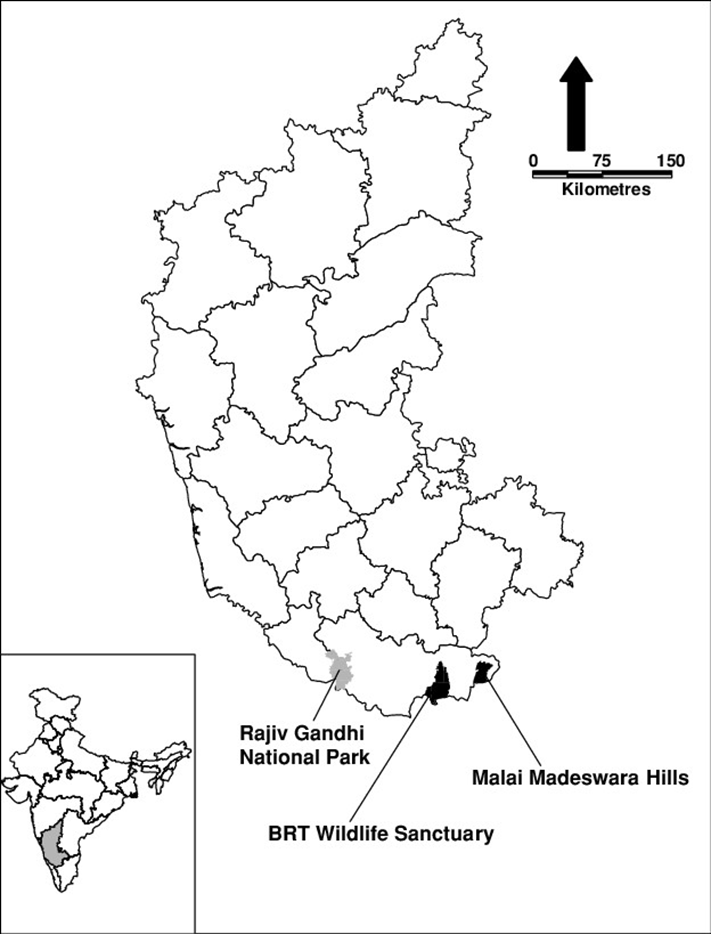
- Location:
- Male Mahadeshwara Hills (MM Hills) are located in Hanur taluk, Chamarajanagar district of southern Karnataka, near the border with Tamil Nadu.
- The hills are situated approximately 150 km from Mysuru and 210 km from Bengaluru, making it a prominent pilgrimage destination for both Karnataka and Tamil Nadu devotees.
- The hill town lies at an elevation of about 910 meters (2,990 feet) above sea level, with its highest peak rising to 1,514 meters (4,967 feet).
- It spans across a dense forest region, enhancing its ecological and scenic value.
- Historical and Cultural Significance:
- The Male Mahadeshwara Hills are deeply revered in local tradition and history.
- The region is centred around the Sri Male Mahadeshwara Temple, believed to have been established around 600 years ago.
- The deity Lord Mahadeshwara, regarded as an incarnation of Lord Shiva, is said to have performed penance here in the form of a swayambhu (self-manifested) Linga.
- A key legendary figure, Junje Gowda, a Kuruba Gowda landlord, is credited with constructing the temple after witnessing the miracles of the saint.
- Lord Mahadeshwara is often depicted riding a tiger (Huli Vahana) and performing miracles to uplift local tribal communities. His teachings emphasised ahimsa (non-violence) and spiritual awakening.
- The seven sacred peaks of the region—Anumale, Jenumale, Kanumale, Kadumale, Pachchemale, Pavalamale, and Ponnachimale—collectively form the spiritual geography of MM Hills.
- These hills are not just a pilgrimage centre but a cultural hub where Janapada folk songs recount the saint’s life and miracles.
- The temple was once managed by Salur Mutt, said to be founded by Mahadeshwara himself, and is now administered by the Karnataka Government's Muzrai Department. The region continues to draw lakhs of pilgrims annually, blending religious reverence with natural beauty.
Dhubri-Phulbari Bridge
Why in news?
a. India's Second-longest river bridge, the Dhubri-Phulbari Bridge, is under construction over the Brahmaputra River, connecting Dhubri in Assam to Phulbari in Meghalaya. As of March 2025, approximately 59% of the work has been completed.
About Dhubri-Phulbari Bridge:
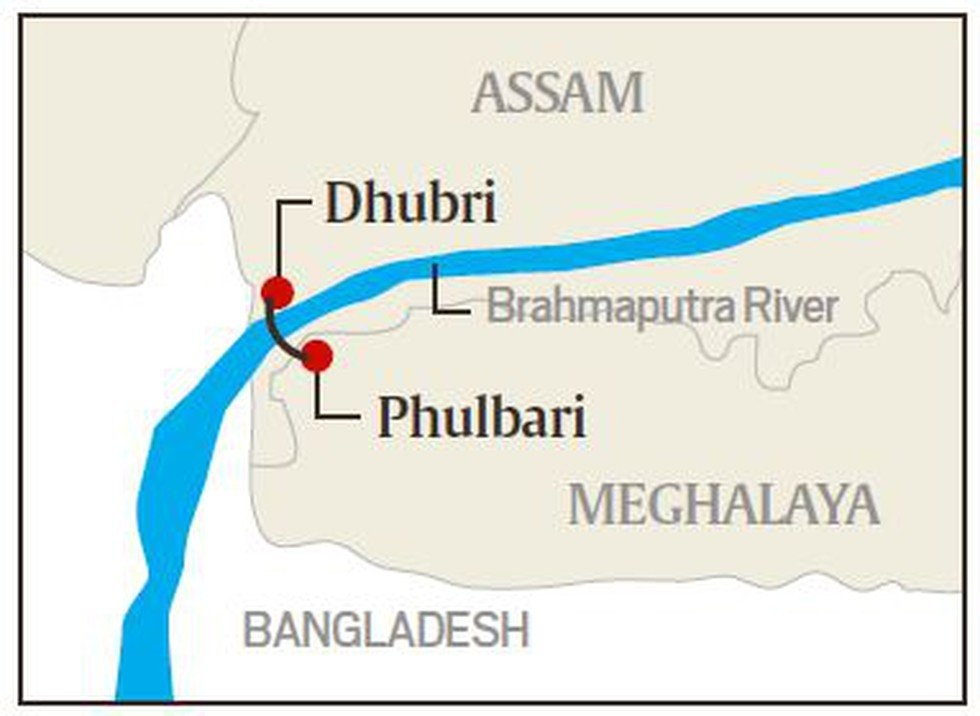
- Location:
- The Dhubri-Phulbari Bridge is an under-construction four-lane extradosed cable-stayed bridge across the Brahmaputra River, connecting Dhubri in Assam with Phulbari in Meghalaya.
- Located close to the Bangladesh border, this bridge is a crucial link between the northeastern states of India.
- Once completed, it will form a part of National Highway 127B, connecting Dhubri to Tura, Nongstoin, and other key towns of western and central Meghalaya.
- Significance:
- The Dhubri-Phulbari Bridge holds immense significance for trade, economy, and connectivity in the North-East region of India.
- By linking Assam and Meghalaya directly across the Brahmaputra River, it will eliminate the current dependence on ferry services and long detours, enhancing interstate connectivity.
-
- The bridge will reduce travel distance from 205 km to just 19 km, cutting logistics time and cost substantially. This will facilitate faster movement of agricultural produce, forest goods, and local handicrafts, boosting rural and cross-border trade.
- As a key segment of National Highway 127B, the bridge will integrate remote districts with major economic corridors, improving access to markets, healthcare, and education.
- The enhanced connectivity is expected to attract private investment, stimulate
industrial growth, and encourage eco-tourism in the region.
-
- Being near the Bangladesh border, it also strengthens the potential for
international trade, especially under India’s Act East Policy.
-
- The project will generate employment opportunities during and after construction, and support the development of border infrastructure, including warehousing and logistics hubs.
- In the long term, the Dhubri-Phulbari Bridge is expected to serve as a critical economic lifeline, promoting inclusive growth and regional integration in the Northeast.
Trimbakeshwar Jyotirlinga Temple
Why in news?
a. The Maharashtra government has approved ₹275 crore for developmental projects at the Trimbakeshwar Jyotirlinga Temple in Nashik, enhancing infrastructure and pilgrim facilities ahead of the 2027 Simhastha Kumbh Mela.
About Trimbakeshwar Jyotirlinga Temple:
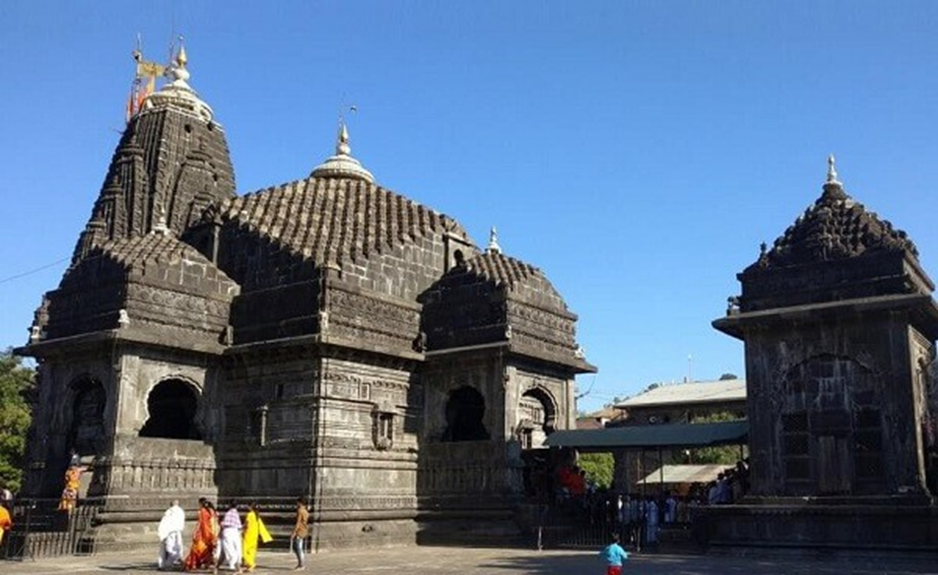
- Location:
- The Trimbakeshwar Jyotirlinga Temple, located in Trimbak town of Nashik district, Maharashtra, is one of the most revered twelve Jyotirlingas of Lord Shiva in India.
- Positioned at the foothills of Brahmagiri, Nilagiri, and Kalagiri mountains, it lies 28 km from Nashik and is considered the birthplace of the sacred Godavari River, often referred to as the Ganga of the South.
- The river originates from the Kusavarta Kunda, a sacred pond within the temple complex, built by Shrimant Sardar Raosaheb Parnerkar, the Fadnavis of Indore State.
- Historical and Cultural Significance:
- Historically, it is believed that Lord Shiva manifested here as a Jyotirlinga, a pillar of light, to resolve a cosmic dispute between Brahma and Vishnu.
- Unique among the Jyotirlingas, the linga here features three faces symbolising the Trimurti—Brahma, Vishnu, and Shiva.
- Over time, the lingas have eroded due to continuous water rituals, symbolising the
decay of human society.
-
- The temple was rebuilt by Peshwa Balaji Baji Rao after destruction by Aurangzeb, and showcases elegant basalt architecture.
- It houses images of deities like Ganga, Rama, Krishna, Parashurama, and Lakshmi Narayana, and hosts sacred rituals such as Narayan Nagbali, Kalsarpa Shanti, and Tripindi Shraddha, attracting devotees from across India.
Lake Natron
Why in news?
a. Lake Natron in Tanzania is extremely toxic with high alkalinity, turning animals into stone-like statues.
About Lake Natron:
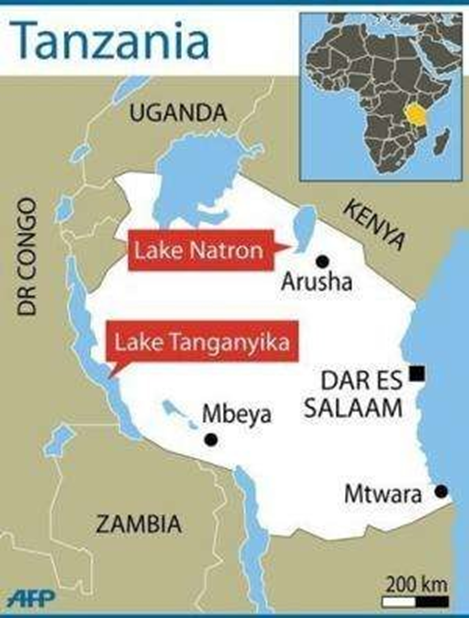
- Location:
- Lake Natron is an alkaline salt lake located in the Ngorongoro District of
Arusha Region, Tanzania, near the border with Kenya.
-
- It lies within the Gregory Rift, which is the eastern branch of the East African Rift, and is part of the Lake Natron Basin, designated as a Ramsar Site.
- The lake spans about 57 km long and 22 km wide, with a maximum depth of
three meters.
-
- It is primarily fed by the Southern Ewaso Ng'iro River and mineral-rich hot springs, contributing to its unique geographical features.
- Reason Behind High Alkalinity:
-
- Lake Natron's high alkalinity, with a pH exceeding 12, is a result of intense
evaporation in the region.
-
- The lake's surroundings contain alkaline trachyte lavas, which contribute significant amounts of carbonate but are low in calcium and magnesium.
- These minerals, combined with high evaporation rates, result in the lake concentrating into a caustic alkaline brine rich in sodium carbonate (natron) and sodium sesquicarbonate (trona), creating an extreme environment hostile to most life forms.
- Ecological Impact:
- The extreme conditions of Lake Natron, with temperatures often exceeding 40°C
(104°F), make it inhospitable to most animals.
-
- However, the lake is home to endemic algae, invertebrates, and two species of alkaline tilapia that thrive in the hot spring inlets.
- The lake's high alkalinity also provides a safe breeding ground for lesser flamingoes, as its caustic waters deter predators.
- This unique habitat supports one of the largest flamingo populations in East Africa.
- Significance:
- Lake Natron holds international ecological significance as it serves as the only regular breeding area for Africa’s lesser flamingoes.
- The lake's unique ecosystem is also a Ramsar Wetland of International Importance.
- However, the lake faces threats from planned developments, such as a soda ash plant and a hydroelectric power project, which could disrupt its delicate balance and endanger its biodiversity.
West Coast National Park
Why in news?
a. South African National Parks blocked Kropz Plc's bid to extract phosphate from the West Coast National Park's important wetlands.
About West Coast National Park:
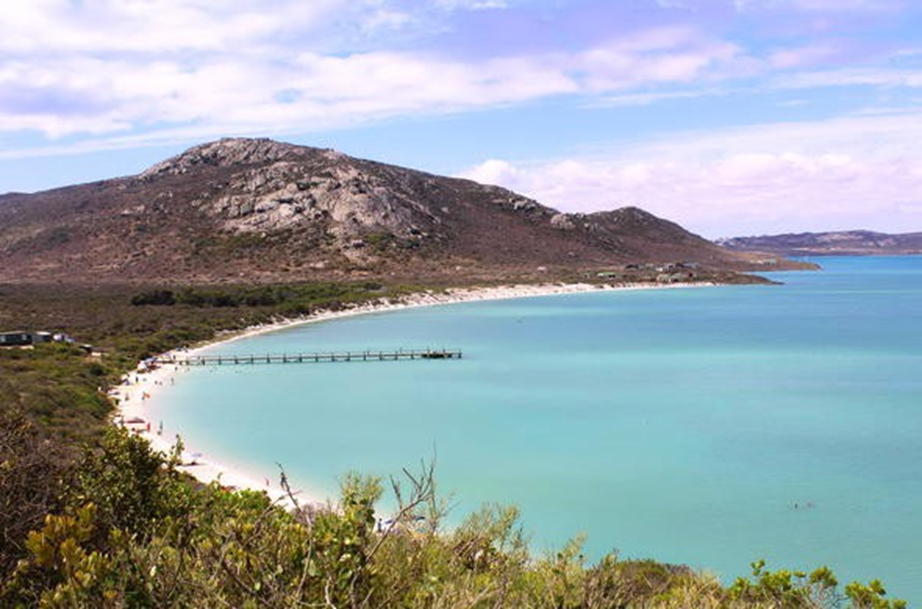
- Location:
- The West Coast National Park is located 88 km (55 mi) north of Cape Town in the Western Cape province of South Africa.
- It forms part of the Cape West Coast Biosphere Reserve, which is a UNESCO
Man and the Biosphere Programme site.
-
- The park stretches from the town of Yzerfontein in the south to the Langebaan Lagoon and is bordered by the Atlantic Ocean on the west and the R27 coastal road.
- Potential Resources:
- In addition to its ecological significance, the region surrounding West Coast National Park is also rich in phosphate reserves.
- The area is home to South Africa’s second-largest phosphate deposit, which has attracted interest for its potential use in fertiliser production.
- Phosphate is a crucial natural resource, with significant deposits lying near the park, particularly around Saldanha Bay.
- Ecological Significance:
- The West Coast National Park is ecologically important due to its diverse habitats, including fynbos, wetlands, and marine areas.
- It serves as a vital breeding ground for migratory birds, including Palearctic species that visit during the austral summer.
-
- The park is a key site for birdwatching, with notable species like the greater flamingo, Cape gannet, and African penguin.
- It also houses large populations of antelopes and other wildlife, such as caracals
and bats.
-
- The annual spring flowers that bloom from August to September are a significant ecological feature, attracting tourists and supporting local pollinators.
|
Also Read |
|
| Public Administration Optional | |
| UPSC Monthly Magazine | Question Answer Practice For UPSC |




